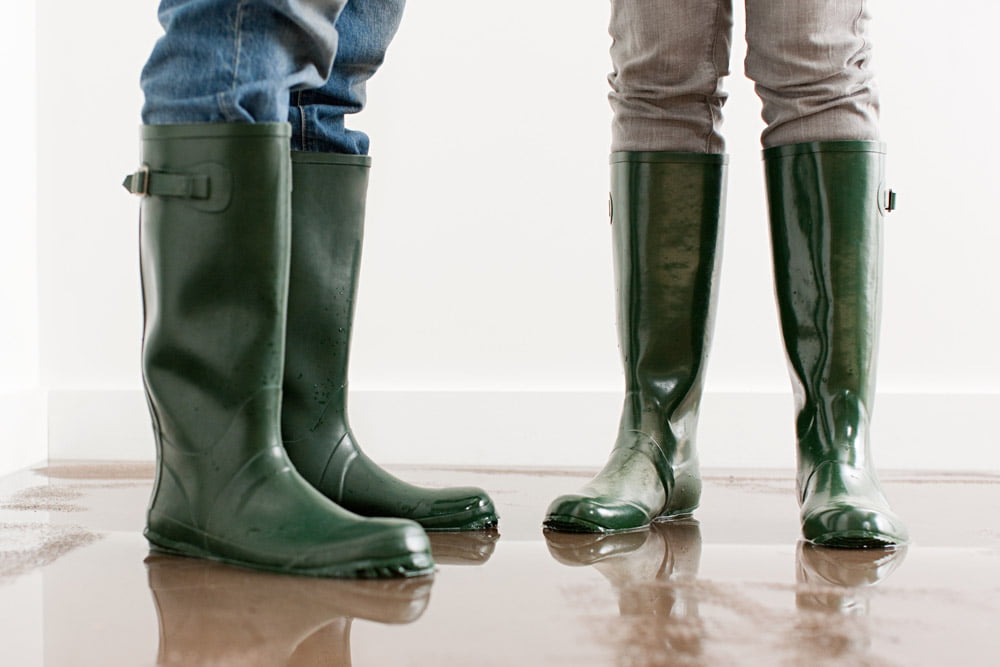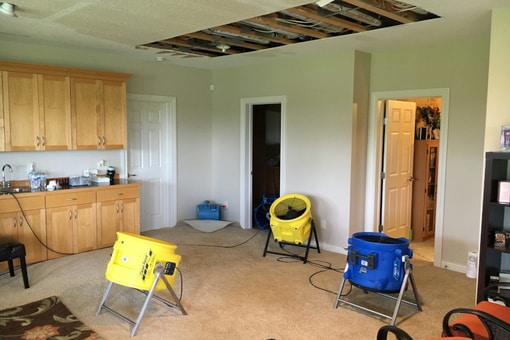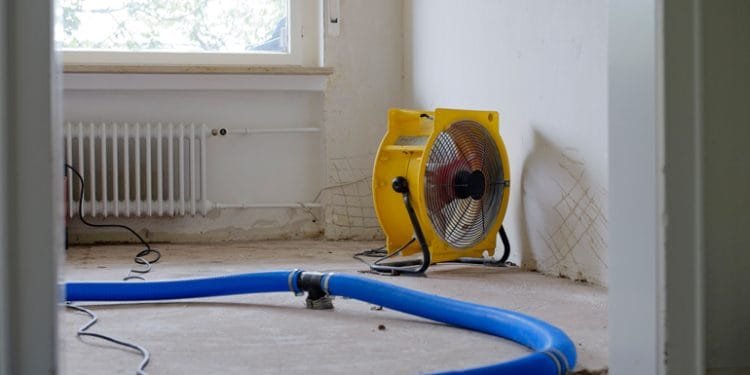If your home was flooded with water, you know how lousy it feels. It’s a feeling that doesn’t just come and go. Thus, it’s essential to dry the water damage and avoid mold so that your home can be restored as soon as possible. Water damages are very common in homes today. About 30% of all houses have some form of plumbing that can cause water damage, including sump pumps, toilets, faucets, washing machines, and even roofs. Luckily, most types of water damage can be easily prevented or repaired if you take the right steps immediately after the incident. Read on to learn more about how to dry out water damage and avoid mold in your home.

What is Water Damage and How Do You Recognize It?
When you have a leaking water pipe, overflowing toilet, or water poured on your floor, you’ve experienced what’s known as “water damage”. The damage is caused by water seeping into your home’s construction. When the levels of moisture get too high, they can damage the building materials and create unhealthy conditions. Water damage can happen in many ways. It can be caused by a broken pipe or wall, or through severe weather events, such as hurricanes and floods. Breaking a pipe usually occurs because the pipe is too old, has been damaged by tree roots, or has had a section of pipe replaced. If you suspect that your home has been damaged by water, you need to act fast. You can’t undo the damage once it has occurred. You can, however, prevent further damage and mitigate the risk of mold by following these steps.
Avoid Mold in a Water Damaged Home
Water damage is a major issue, for both humans and their properties. Mold is a condition that rapidly grows in the moist areas of your home. If there is any water damage present in your home, mold is a good possibility. After flooding, the source of the water damage needs to be repaired and the level of moisture needs to be avoided. When you have water damage, you shouldn’t just let it sit and collect water. That’s not only a bad idea, it’s against the law. It could become a breeding ground for different types of harmful bacteria and mold. You need to get rid of the excess water and let the house dry out as soon as possible. The sooner a flood has been dealt with, the sooner you can get your life back to normal. If you don’t dry out the water, it’s only a matter of time before it causes serious structural damage. You don’t want to be dealing with mold and structural damage, or have to replace all your belongings.
Repairing Water Damage
If you have water damage, the first thing to do is to get rid of the excess water. You can do this by opening the windows and putting a bucket underneath the downspout. Make sure that the bucket is filled with enough water so that the area around the downspout is not just flooded, but also soaked. Let the water sit for at least 24 hours before removing it. Next, you can begin repairing the damage. You will need to remove any damaged materials, such as the damaged floorboards or ceiling tiles. You can also remove any damaged electrical wiring or plumbing. After the damage has been repaired, the next step is to remove any excess water. This includes removing any standing water, as well as any that is still trapped inside the wall or structure. The last thing to do is to apply a dehumidifier to the area to try to remove any excess water. You can also use a dehumidifier to remove any mold from the air.

Avoid Mold After Repairs Are Complete
After a flood has been cleaned up, you should avoid any contact with water. This includes washing your hands, dishes, and any other surfaces that may have come into contact with water. It’s also important to keep your pets, children, and other family members away from the affected area to avoid spreading the bacteria and mold. In most cases, you can return to normal life once the repairs are completed. However, you should alert your insurance company as soon as possible so they can start work on repairing the damage. Make sure that the repairs are completed before reopening your home. This is especially important if your home was damaged by extreme weather conditions, like a flood. Floods can damage the structure of your home and leave the walls weakened. You don’t want to reopen your home to find that it is unsafe.
Steps to Take When Finding Water Damage
If you suspect your home has been damaged by water, you need to act fast. You need to clean up the water and stop the damage from continuing. You also need to note the extent of the damage and take steps to prevent mold. First, you need to clean up the water. This means removing the bucket and plugging up any holes in the walls or floors that the water may have come through. You also need to make sure that the water has stopped coming into your home so you can plug up any holes. Next, you need to make sure that the walls and floors are dry before reopening them to the public. You can use a bucket of rice to sop up any water on the walls or floors. When the walls are dry, you can begin to repair the damage or paint over the damaged areas. Notice any possible leaks and seal them up before they damage your home further. This is especially important if your home was damaged by floodwater. You may need to turn off the water supply or have a plumber fix the leak.
Tips to Help Avoid Mold After Finding Water Damage
Clean up the water – Make sure that the water has stopped coming into your house and that the walls and floors are completely dry before reopening them to the public. If you have water damage, act fast to get rid of the excess water before it causes further damage. – Seal any possible leaks – Make sure that the water supply is turned off and that any leaks are properly sealed up. – Turn off the water supply – In order for the water to dry out, it has to evaporate. This means that the water has to move somewhere. – Keep the air moving – Areas like basements and walls can easily become damp rooms if they get too much time without moving air. – Leave the area – Make sure that you don’t return to the area until it has been cleaned up and that any possible mold has been removed. – Get help – If you notice signs of a serious water damage, you should get help immediately.
Conclusion
If you suspect that your home has been damaged by flooding, you need to act quickly. You need to get rid of the excess water as soon as possible, let the walls and floors dry out completely before reopening them to the public, and seal any possible leaks. There are lots of things you can do to avoid mold after finding water damage. Make sure you clean up the water, seal any leaks, and keep the air moving. Make sure you follow these steps and your home will be well on its way to being restored and ready to live in once again.

















































